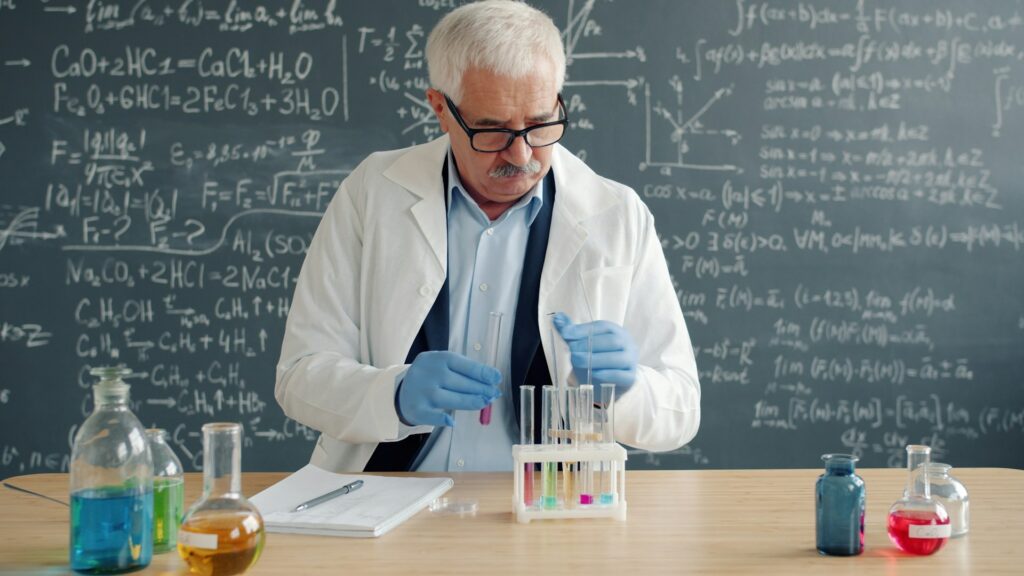A collaboration between researchers at Rice University and Oak Ridge National Laboratory has produced a new model describing how water molecules relax around MRI contrast agents. Their framework, which draws directly from first-principles physics, may eventually support improvements in medical imaging and expand understanding of NMR relaxation in other scientific fields.The new research addresses this challenge directly. According to Walter Chapman, professor of Chemical and Biomolecular Engineering at Rice, the team aimed to develop a framework rooted in the underlying physics rather than in approximations.
Pinheiro dos Santos, T. J., Orcan-Ekmekci, B., Chapman, W. G., Singer, P. M., & Asthagiri, D. N. (2025). Extended molecular eigenmodes treatment of dipole–dipole NMR relaxation in real fluids. The Journal of Chemical Physics, 163(18). https://doi.org/10.1063/5.0299283
Magnetic resonance imaging relies on the way atomic nuclei respond to magnetic fields. In clinical settings, contrast agents are introduced to increase the signal differences between tissues. These agents—commonly based on gadolinium complexes—modify the relaxation behavior of nearby water molecules.
Walter Chapman, professor of Chemical and Biomolecular Engineering at Rice University stated,
“This kind of detailed modeling can help us understand how fluids behave in confined spaces like porous rocks or biological cells. It’s a fundamental tool that links molecular-scale dynamics to observable effects.”
For decades, the models used to describe this relaxation process have been simplified, often reducing complex molecular motion to a handful of averaged parameters. While useful, these models struggle to fully match experimental data or guide the development of new contrast formulations.
Chapman notes that by relying on the governing equations of molecular motion, the researchers now have a way to interpret relaxation behavior in a manner that is both predictive and explanatory an advantage when dealing with medical diagnostics or engineered fluids.
Earlier studies from the same group and others used molecular dynamics simulations to track how water molecules interact with metal-based imaging agents. These simulations provided detailed snapshots but lacked a unifying theoretical model capable of connecting them consistently to experimental measurements.
In the new study, Dilipkumar Asthagiri, senior computational biomedical scientist at Oak Ridge National Laboratory, explains that the group has now developed a theory that can interpret simulation and experimental data within one consistent framework. He describes it as general enough to be applied not only to contrast-agent systems but to liquids more broadly.
Their approach solves the Fokker-Planck equation, which describes the probability of molecular positions and velocities over time. By doing so, the model captures the “eigenmodes” of molecular motion—the natural patterns that dominate how water responds to contrast agents.
Thiago Pinheiro, first author of the study, compares the concept to hearing the full range of notes making up a musical chord. Earlier models captured only a small portion of this range; the new one captures the entire set.
Because the model is derived directly from first-principles physics, it can account for interactions and time scales that previous approaches treated only approximately.
The researchers report that their eigenmodes framework aligns closely with experimental MRI relaxation measurements, even across a range of clinically relevant frequencies. It also shows that many existing simplified formulations are special cases of the broader theory.
This connection may help future work refine, correct, or replace long-standing assumptions used in imaging research and commercial contrast-agent development.
Although the medical applications are clear, the authors note that the framework has potential across diverse fields. NMR relaxation techniques are used in battery research, porous-media analysis, and studies of subsurface fluids.
Philip Singer, assistant research professor at Rice, points out that liquids in confined environments such as geological formations or biological cells often behave differently from bulk fluids. A model that captures these dynamics more accurately could improve analysis in these areas.
The team has released its computational tools as open-source software so that researchers in other domains can test, adapt and expand the model.
The study also includes contributions from Betul Orcan-Ekmekci of Rice’s Department of Mathematics, whose work supported the mathematical development of the framework.

Adrian graduated with a Masters Degree (1st Class Honours) in Chemical Engineering from Chester University along with Harris. His master’s research aimed to develop a standardadised clean water oxygenation transfer procedure to test bubble diffusers that are currently used in the wastewater industry commercial market. He has also undergone placments in both US and China primarely focused within the R&D department and is an associate member of the Institute of Chemical Engineers (IChemE).



